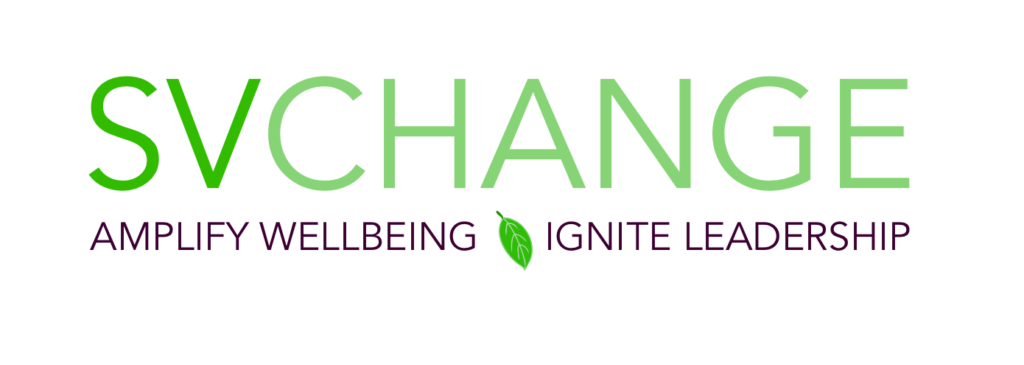
How can mindfulness impact the workplace? When stress levels often overshadow productivity and well-being, finding a balance is crucial. The key? You guessed it: mindfulness. This isn’t just about taking a moment to breathe; it’s about fundamentally transforming how we lead and interact in our professional settings. Today, on What’s Possible, we delve into how mindfulness can be the cornerstone of effective leadership and a healthier workplace culture.
Dr. Della Sanders, a renowned mindfulness coach and founder of MPowered Consultants, stands at the forefront of integrating mindfulness with leadership. With an extensive background in social psychology and human resources, Della has dedicated her career to teaching the benefits of mindfulness in reducing stress and enhancing decision-making in the corporate world. Her approach is not just theoretical but deeply practical, making her insights invaluable for anyone looking to thrive in leadership and life.
Stress and mindfulness in the workplace
Stress is more than just a personal inconvenience; it’s a pervasive issue that can erode the foundations of our work environments. High stress levels lead to decreased productivity, increased employee turnover, and a significant drop in engagement. When leaders fail to manage their stress, it cascades down to every corner of the organization, creating a cycle of inefficiency and dissatisfaction.
In the fast-paced realm of executive leadership, the transition from the whirlwind of daily tasks to the reflective space of a coaching session is often abrupt. Recognizing this, my team and I have adopted a mindful approach to start each session, ensuring that every leader arrives not just physically but mentally present. We begin with simple yet profound practices such as stretching or a breathing exercise, which are instrumental in grounding our clients right out of the gate. This is crucial because when leaders step into our sessions, they’re often sprinting from one commitment to the next, and their minds are scattered with the remnants of the previous engagement.
Mindfulness is the practice of being present and fully engaged with the current moment, without distraction or judgment. At SVChange, the impact of integrating mindfulness into our coaching sessions has been profound and resonant. One of the techniques we frequently use is the “478 breath,” a method known for its ability to rapidly reduce stress and enhance focus. Leaders have shared with me how incorporating this breathing technique into their routine—before public speaking engagements or critical meetings—has been transformative. It’s more than just a momentary pause; it becomes a tool for them to regain control over their frantic schedules and approach their responsibilities with renewed clarity and purpose.

Actionable steps for using mindfulness at work
Incorporating mindfulness into the workplace doesn’t just reduce stress—it transforms the organizational culture. Leaders who practice mindfulness report higher levels of emotional intelligence, better decision-making, and improved conflict resolution skills. Teams mirror this behavior, leading to enhanced productivity, creativity, and overall job satisfaction. Furthermore, mindfulness practices help in building resilience, a critical attribute in navigating today’s complex business challenges.
-
1. Start with Self: Leaders should begin by incorporating mindfulness practices into their daily routine—simple steps like mindful breathing or a few minutes of meditation each day can set the tone.
2. Create Mindful Meetings: Begin meetings with a minute of silence or breathing exercises to center all participants and enhance focus.
3. Encourage Mindful Breaks: Promote regular breaks where employees can step away from their desks, practice deep breathing, or engage in brief stretches to reset their minds.
4. Train and Educate: Provide training sessions on mindfulness to help employees understand and utilize these practices to reduce stress and improve their work performance.
These mindfulness practices not only sets the tone for a productive coaching session but also equips leaders with a personal skill they can take back into their professional and personal lives. The feedback has been overwhelmingly positive, with many leaders reporting that these brief moments of mindfulness allow them to emerge from our sessions—and indeed their daily challenges—feeling calmer, more centered, and ready to lead with intention.
It’s a testament to the power of mindfulness in leadership: a simple practice that refines the mind’s focus, enriches the leader’s presence, and enhances their capacity to navigate the complexities of their roles with grace and resilience.
Centering self to lead others
Mindfulness is more than a buzzword in today’s leadership lexicon; it’s a transformative tool that can revitalize our approach to work, enhance our interactions, and lead to a more fulfilling professional journey. By embracing mindfulness, leaders can create an environment that not only survives but thrives—even in the face of adversity. Let’s embrace this journey with open minds and lead with intention and awareness, transforming not just our workplaces but also our lives.
Want to have a deeper conversation about how to implement these steps? Send me a message, I’d love to hear from you!










